 by our College Data Analytics Team
by our College Data Analytics TeamSeminole State total enrollment is approximately 16,298 students.
Male/Female Breakdown of Undergraduates
The full-time Seminole State undergraduate population is made up of 52% women, and 48% men.
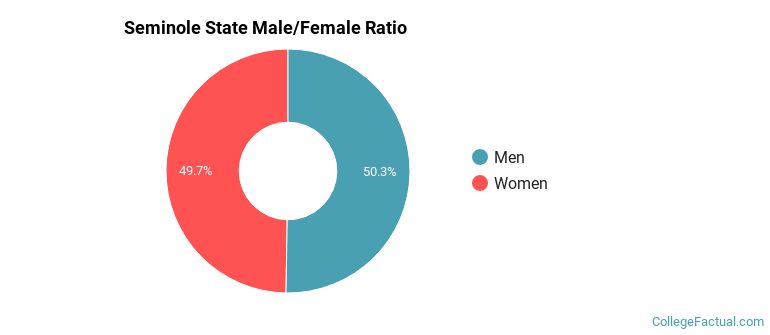
For the gender breakdown for all students, go here.
Seminole State Racial/Ethnic Breakdown of Undergraduates
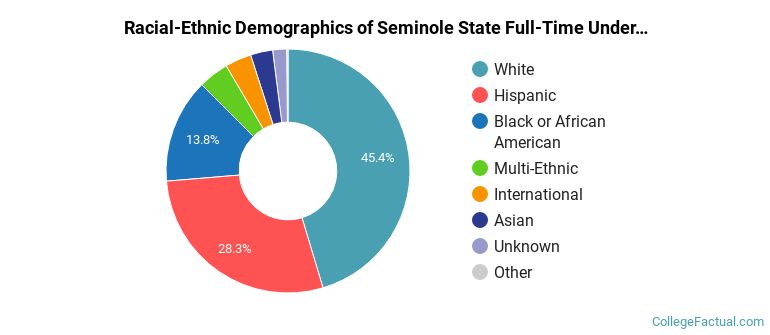
| Race/Ethnicity | Number |
|---|---|
| White | 2,344 |
| Hispanic | 1,490 |
| Black or African American | 652 |
| Multi-Ethnic | 223 |
| Asian | 175 |
| International | 141 |
| Unknown | 134 |
| Native Hawaiian or Pacific Islander | 8 |
See racial/ethnic breakdown for all students.

| Race/Ethnicity | Number |
|---|---|
| White | 7,422 |
| Hispanic | 4,433 |
| Black or African American | 2,439 |
| Multi-Ethnic | 619 |
| Asian | 604 |
| Unknown | 379 |
| International | 331 |
| Native Hawaiian or Pacific Islander | 42 |

There are approximately 9,535 female students and 6,763 male students at Seminole State.
Seminole State ranks 1,636 out of 2,183 when it comes to geographic diversity.
1.72% of Seminole State students come from out of state, and 0% come from out of the country.
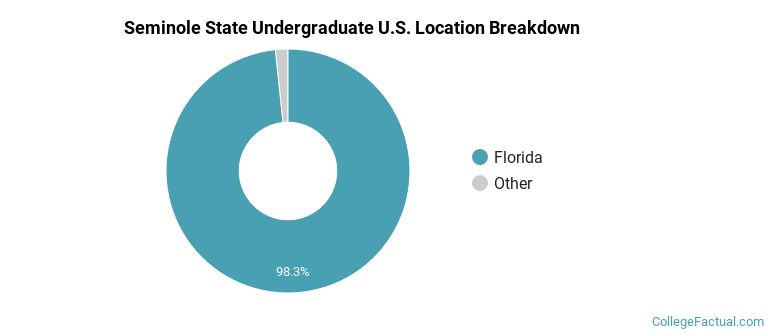
The undergraduate student body is split among 18 states (may include Washington D.C.). Click on the map for more detail.
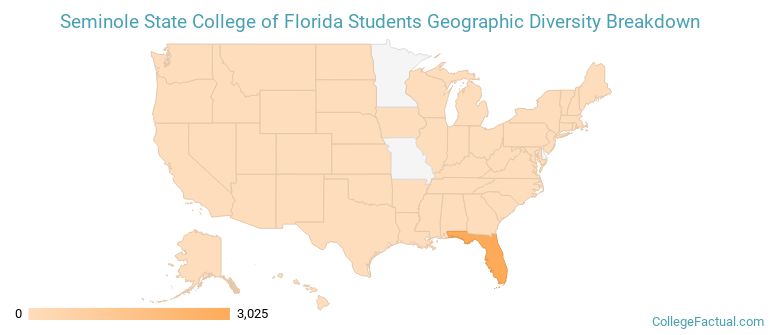
| State | Amount |
|---|---|
| Florida | 3,025 |
| New Jersey | 8 |
| Illinois | 7 |
| New York | 7 |
| Georgia | 4 |
Students from 53 countries are represented at this school, with the majority of the international students coming from Brazil, Vietnam, and Venezuela.
Learn more about international students at Seminole State.
A traditional college student is defined as being between the ages of 18-21. At Seminole State, 42.53% of students fall into that category, compared to the national average of 60%.
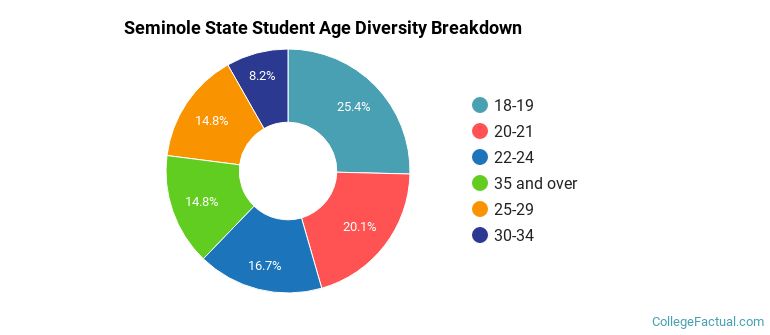
| Student Age Group | Amount |
|---|---|
| 18-19 | 4,162 |
| 20-21 | 3,302 |
| 22-24 | 2,732 |
| 35 and over | 2,429 |
| 25-29 | 2,419 |
| 30-34 | 1,347 |
| Under 18 | 0 |
Footnotes
*The racial-ethnic minorities count is calculated by taking the total number of students and subtracting white students, international students, and students whose race/ethnicity was unknown. This number is then divided by the total number of students at the school to obtain the racial-ethnic minorities percentage.
References
Department of Homeland Security Citizenship and Immigration Services
Find out how College Factual created their Diversity Rankings.